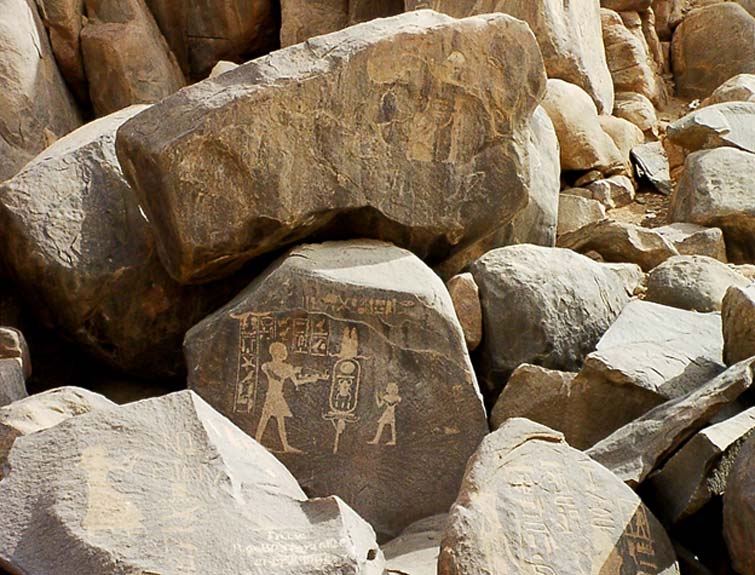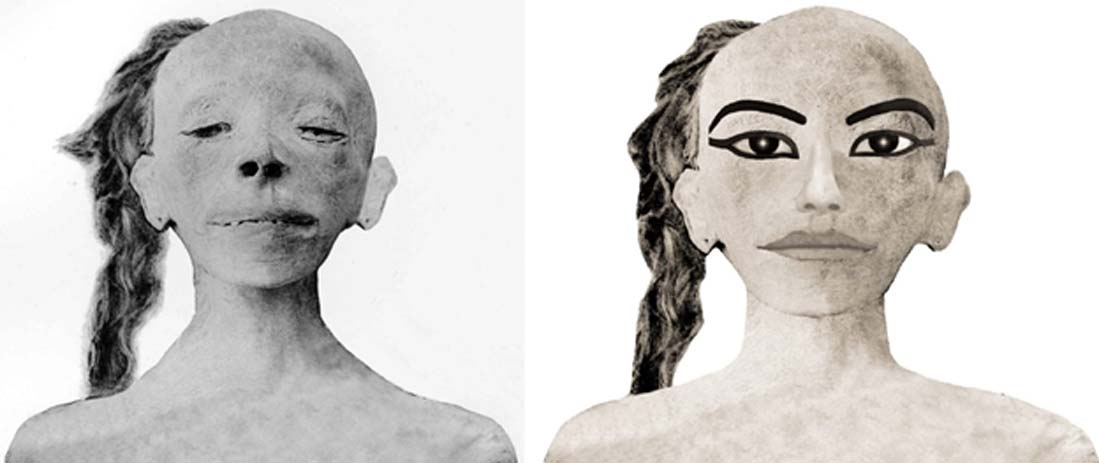
Puzzle of the Unidentified KV35 Mummy: Boy Kings and the Specter of Smenkhkare—Part II
The staggering number of royal mummies that Victor Loret found in the final resting place of the Eighteenth Dynasty pharaoh, Amenhotep II, consisted of some individuals who have not yet been positively ascertained. Prime among them was the body of a young boy who has been identified variously by Egyptologists, with Prince Webensenu topping the list of probable candidates. Are we accurate in our findings, or is a DNA test required to solve the matter conclusively?

A boulder on Sehel Island, near Aswan, is inscribed with the prenomen of Amenhotep II - “Aakheperure". (Photo: HoremWeb/CC BY-SA 3.0)
WHO WAS WEBENSENU?
Even though Loret firmly believed that his identification of the mummy of the boy found in between those of two Amarna period royal women, as Prince Webensenu, was beyond doubt, we know that circumstantial evidence alone cannot aid in positively recognizing ancient Egyptian deceased. The existence of a shabti inscribed with Webensenu’s name (that was probably discovered on the steps of antechamber F which led down to corridor G and the burial chamber), and fragments of a canopic set of this prince were all that Loret had to go by in making his mind up about the unidentified child.

The faces on most statues of Amenhotep II differ slightly from those of his two immediate predecessors. This red granite face is not a portrait, but an official image conceived by the chief royal sculptors to communicate the ideal physical appearance of the king. Brooklyn Museum. (Photo: Keith Schengili-Roberts/CC BY-SA 2.5)
However, the idea that this is the mummy of an Amarna prince, perhaps the enigmatic Smenkhkare himself, finds support from no less than Sir Grafton Elliot Smith, in a roundabout way. He examined the mummy and agreed with Loret that it was probably the mummy of Webensenu. What’s key though is the fact that Smith also made what is now viewed as a sensational claim about this mummy in his 1912 book “The Royal Mummies”: “(It) is a small boy (1 m. 242 mill.) whose general appearance is suggestive of an age of about nine or ten years: but as permanent canine teeth are present and fully grown he cannot be less than eleven years of age.”

Reconstruction of a photo of the mummy of the mysterious boy, sans the deep gash on his neck and jaw. (Right) Artist’s impression of how the child may have appeared whilst alive. This has led to comparisons with Tutankhamun’s Khonsu statue. (Photos and art: G. Elliot Smith - Wikimedia Commons; and Tutankhaten-pasheri)




